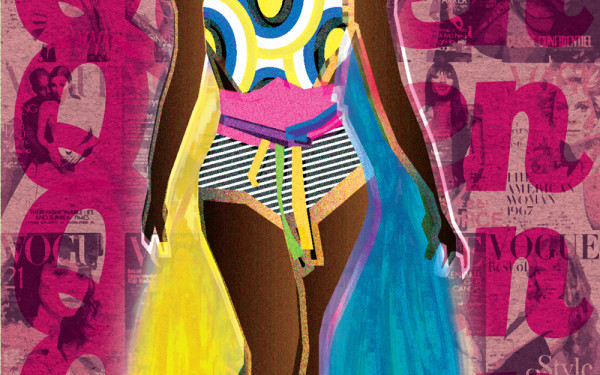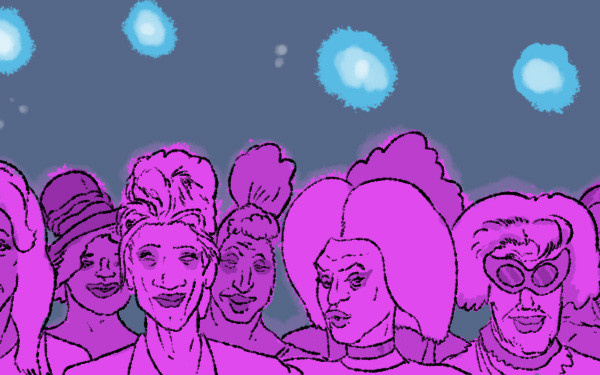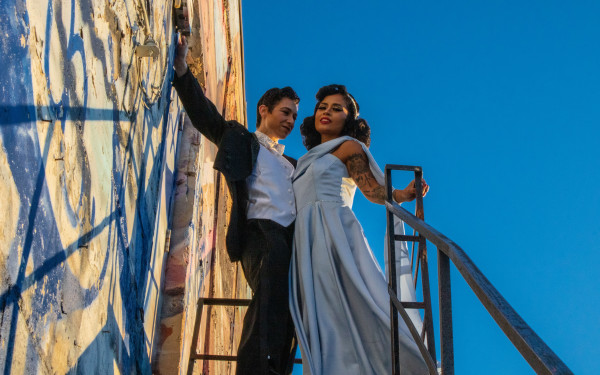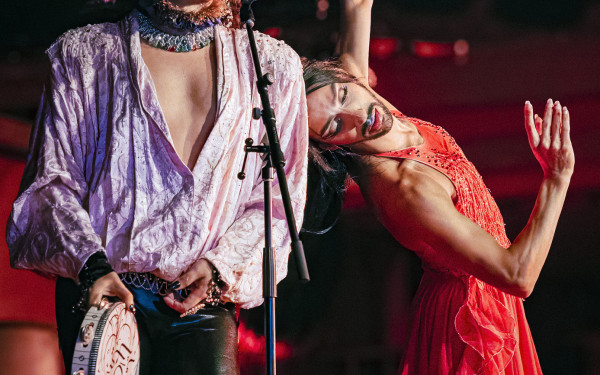Alternadrag: a Stage for the New and Unusual
A Safe Space for the Wide Spectrum of Drag at Bar le Ritz PDB
“Everyone close your eyes,” said host Lizzy Strange. “And when the music starts, open them. Okay? This is a journey.”
The audience was compliant at Bar le Ritz PDB last Thursday for the second edition of Alternadrag. Glass chimed from the bar as the excited whispers of an expectant crowd swelled upon hearing the platform heels clomping up onto the stage.
Cue the music.
On stage is a tall, broad, Amazon-like, platinum blonde; too glamorous for those of us on the floor. Her back faces the crowd. She is tall, and sexy, her posture exuding confidence, elegance, and grace.
The show was laced with drama—blaring music told stories of heartbreak and horror, and garnered laughs from hosts Strange and Boob Dylan.
The performers’ costumes were purposely “extra,” as described by several of the performers themselves; their lips were overdrawn and their eyebrows were heightened. It was just how the audience liked it, as they responded with screams and cheers and, “Fierce!”
The event Alternadrag II is exactly what it sounds like: an alternative, experimental drag show, challenging aspects of a more typical drag show.

Both hosts hinted that drag culture is progressing into a more diversified art form. “It’s really not about cis men playing women anymore,” said Dylan. On what drag is, Strange said, “I would say it’s a heightened performance of gender and gender stereotypes; playing on those, and interpreting them the way that you would as a queer person.”
This meant welcoming in new performers, not only drag queens, but kings (women playing on masculinity), hyperfeminine queens (women playing on femininity), and hypermasculine kings, the reverse.
The performers were free to express themselves however they wanted: through lip-synch, dance, song, and general stage acting. There, they played out their self-made characters’ personalities and stories along to music.
Alternadrag started with Café Velours; a queer, trans, and femme-owned collective which coincidentally became a social space for young people interested in drag.
Dylan, as introduced on Alternadrag’s Facebook page, “a Nobel prize winning singer-songwriter by day and a hot slut ready for action by night.” It was at Café Velours that Dylan and a friend were discussing the idea of an open-mic drag night.
Their original idea of the show was for it to be “for alternative performers, for performers who had never done it before, with no pressure, and no contest,” recalled Dylan. They soon received a message from Mx Macbeth, who also performed at Thursday’s show.
With the help of Dylan, Mx Macbeth, the rest of the team at Redéfinir l’Érotisme (a well-established Montreal collective which explores eroticism, gender, and sexuality), and others, the idea was executed to become Alternadrag. The first show of the set premiered July 14 at Café Velours.
After a long history of classic drag performance in Montreal, drag culture is shifting to become gradually more inclusive. Lizzy Strange, the other host from Thursday’s show, reminisced about her difficulty entering the Montreal drag scene as a new performer who had relocated to the city- She was anglophone, attending shows hosted solely in French. She is also a female performer who performs in hyperfeminine costume, a practice which she said was not as accepted as, say, a cis man performing as a drag queen, as drag has been perceived by the general public.

Both hosts hinted that drag culture is progressing into a more diversified art form. “It’s really not about cis men playing women anymore,” said Dylan. On what drag is, Strange said, “I would say it’s a heightened performance of gender and gender stereotypes; playing on those, and interpreting them the way that you would as a queer person.”
On Thursday, the audience was witness to several performers who were taking the stage for the first time, dressed in bright lipstick, light-up bras, ball gowns, wigs, and platform heels. All of the performers did their own makeup, or each other’s, which was seen during the public dressup event held beforehand at Café Velours.
The performers also made their own costumes. Lady Boudoir, who was the first to perform at Thursday’s show, wore a thrift store bra with spikes, in which she said she had woven string lights to make the bra glow.
According to Dylan, there are a multitude of reasons why someone participates in drag. Many performers said that they felt good when they got in costume and felt the adrenaline that comes with the performance. Though, as with any subculture, there is a political underlining to the performance.
“[Drag] is very complex and has different expressions depending on the community who’s performing it, depending on the place on earth where it’s performed, and depending on the time in history when it was performed,” Dylan said. “In my opinion, [drag] always has a political underlining. Whatever we’re doing with it, it has a social-cultural weight.”
Strange echoes this belief. She hopes that the audience can interpret for themselves what message the performers are trying to get across.
“I see a lot of devoted people who do this out of love for their craft, out of love for being resilient and queer in a queer space, and having fun, and being beautiful, and feeling themselves,” Dylan said.
“You need devotion just to stand for hours on platform heels with thick layers of makeup and uncomfortable, extra, huge clothes,” Dylan continued. “Just to do that — it’s hard in itself just to be in drag. That’s what we call performance art; it’s something that is hard to do, that pushes everything beyond the limit of what it means to be human. It pushes the limit of gender, pushes the limit of what art is.”
For updates on future events, follow @alternadrag on Instagram or check their facebook page, facebook.com/alternadrag.

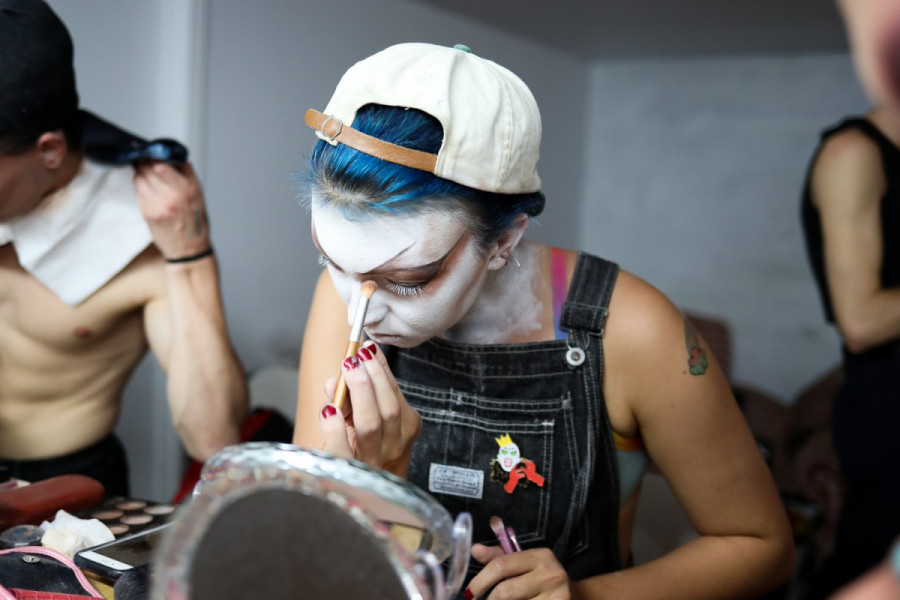
_600_832_s.png)

